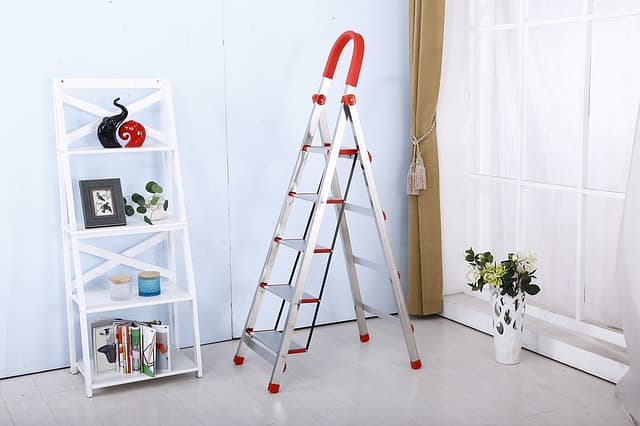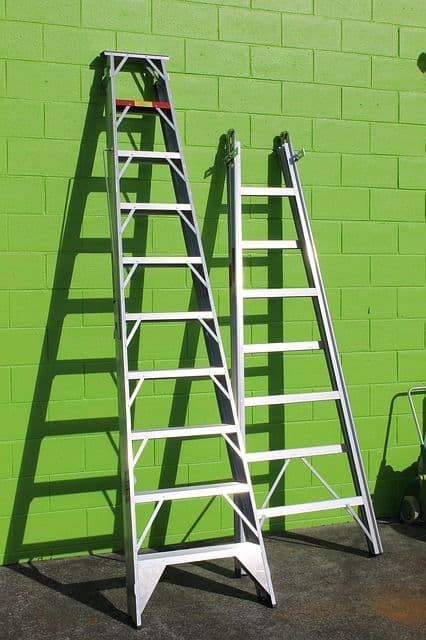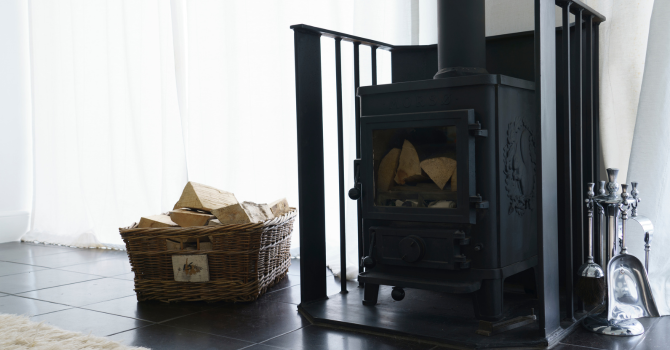Are you looking for a contractor?
Submit our quick form and get quotes now!
Table of Contents
6 min read
How to use a ladder to avoid injury


6 min read
How to use a ladder to avoid injury
Renovation tipsHow to use a ladder to avoid injury
If you’re a homeowner who is using a ladder to fix that broken light bulb or to install some new curtains, you might think that the job is straightforward. However, using a ladder incorrectly is one of the key ways that cause homeowners to sustain injuries during renovation projects. Ladder safety is more complicated than just climbing on up, so make sure to know your stuff before reaching for that top shelf.
There are several factors that play into ladder-related accidents or injuries, including sudden movement, haste, lack of attention, age and physical condition of the user, as well as weather conditions. Luckily, we’ve got some guidelines for the homeowner to follow in order to minimize or eliminate ladder injuries altogether.
Here are the safety measures to follow when using a ladder:
The General Rules of Ladder Safety
All ladders, regardless of their height, have a maximum weight requirement. Bear in mind that in order to choose the correct ladder for the correct job, you must consider both height and weight. The weight requirement includes the total weight allowed on the ladder, including tools. Remember this when choosing a type from your local hardware store.
If you are feeling unwell in any way, including experiencing symptoms of nausea, dizziness or are prone to episodes of vertigo, do not operate a ladder! Have a friend or loved one come over to assist you if it is a pressing job, or wait until you're in a better state of mind and are able to operate the ladder comfortably. If you are feeling in tip top shape and are ready to operate the ladder, make sure to wear slip resistant shoes. Avoid shoes with leather soles or anything that won't leave you with a firm grip on the steps, as slipping from such height can lead to serious injury.
How to use a Stepladder
When first opening a stepladder, make sure that the metal hinges found on either side, called spreaders, are locked down and straight. Next, place the ladder down on the ground, making sure to set it up on even ground. Each of the step ladders' feet must be placed firmly on the ground. To make certain that this is the case, try moving the ladder from side to side to verify its sturdiness.
It is recommended that you do not stand on the highest tier, as standing on the very top of a stepladder is a common mistake. Also, do not lean a stepladder against a wall and try to use it like this, as this method is an accident waiting to happen.
Make sure to establish which side of the ladder is the front and which is the back. Only climb up the front side, avoiding the back side at all costs. Also, only allow one person at a time to use the ladder, unless the ladder has been specifically designed for the use of two people.
When you’re finally up on the step ladder, have your body positioned facing forward, keeping your hips between the two vertical ladder rails. Reaching too far left or right could cause the ladder to topple, so make sure body weight is correctly distributed. Keep all tools you are working within one place, or have a second person assist you by handing you what you need while working.
How to use an Extension Ladder

source: Pixabay, paul_harrison
An extension ladder is used to access high areas of your household, jobs that require you to reach the ceiling or that tall shelf that is difficult to dust. However, since you’re perched up at an irregular height, accidents are bound to happen if proper safety measures aren’t taken.
To correctly extend the ladder, lay it on the ground horizontally, keeping its feet braced against the side of your house or a wall. Next, raise the top end of the ladder, walking it slowly upright. When the ladder is nearly vertical, grab a rung mid-way up and walk the base of the ladder away from the house or wall it was resting on.
Once the ladder has been extended, raise the fly, or the telescopic section of the ladder, to your chosen height. Following this, check to make sure that all the rung hooks are locked securely in place. Further, to set your ladder up at the proper angle, the rule of thumb is to use a 1:4 ratio. This means that you must divide the ladder height by 4, and then move the base of the ladder that many feet away from the wall. For example, if your ladder is 16 feet tall, move the base 4 feet away from the wall.
As we stated with our step ladder, make sure the base of the extension ladder is placed firmly on the ground and does not sit unevenly. Any haste in this department will lead to an accident, so don’t be lazy! If one foot does not lay flat, do not place anything underneath to balance it out, as this is a common mistake. If you are outside, dig out some of the dirt from underfoot, even if it temporarily ruins the grass.
Further, do not stand your ladder on a surface that is wet, muddy, icy or unstable in any way. Make sure to test it by placing your body weight on one of the lower ladder rungs before climbing up to the top! Moreover, never stand higher than the fourth rung from the top. Ladders are not designed for the top level to be used, so bear that in mind when you’re climbing high.
When ascending and descending from the ladder, make sure to always be facing the ladder, using both hands to grab the rungs rather than the adjacent rails. If you can’t find a second party to help pass you your required tools, consider investing in a tool belt. This will leave both hands free when working, greatly improving overall safety.
As we mentioned regarding a stepladder when using an extension ladder follow the same rule of thumb and keep hips within vertical side rails. Now, you should be properly equipped to find your way up that ladder!
Get 3 renovation quotes for your renovation project
RenoQuotes.com can help you get quotes for your renovation project. If you submit your project to us, we’ll put you in contact with top-rated contractors. Fill in the form on the homepage (it only takes a few minutes), and you will get estimates from trusted professionals.
Last modified 2023-11-07
Looking for something else?
Related articles
The latest industry news, interviews, technologies, and resources.

Christime Simard • 07 Nov 2023
As a design and user-friendly element, the wood stove is a real source of well-being designed to comfort us during the harsh winter months. Made of steel, brick, cast iron or glass, the stove stands for durability and has many other advantages.

Amanda Harvey • 07 Nov 2023
If you find an infiltration of water through the roof of your home, then it may raise some concerns about the consequences. In the same regard, this situation should raise questions about the measures that need to be taken to avoid this unpleasant occurrence.

RenoQuotes.com • 07 Nov 2023
Wood siding isn't only a matter of aesthetics. Even though it's been at the forefront of many myths, it still has a lot of advantages there are yet to be known by the general public. Natural wood siding is available in different essences (cedar, spruce, pine, etc.), and it will give a unique touch to your house, chalet or store.
Léa Plourde-Archer • 07 Nov 2023
Purely esthetical or essential, done on a whim or carefully thought out... The world of interior renovations is vast and answers to a wide variety of needs. From painting to installing kitchen cupboards, laying a new floor, building columns and building a home expansion, the possibilities are endless!
